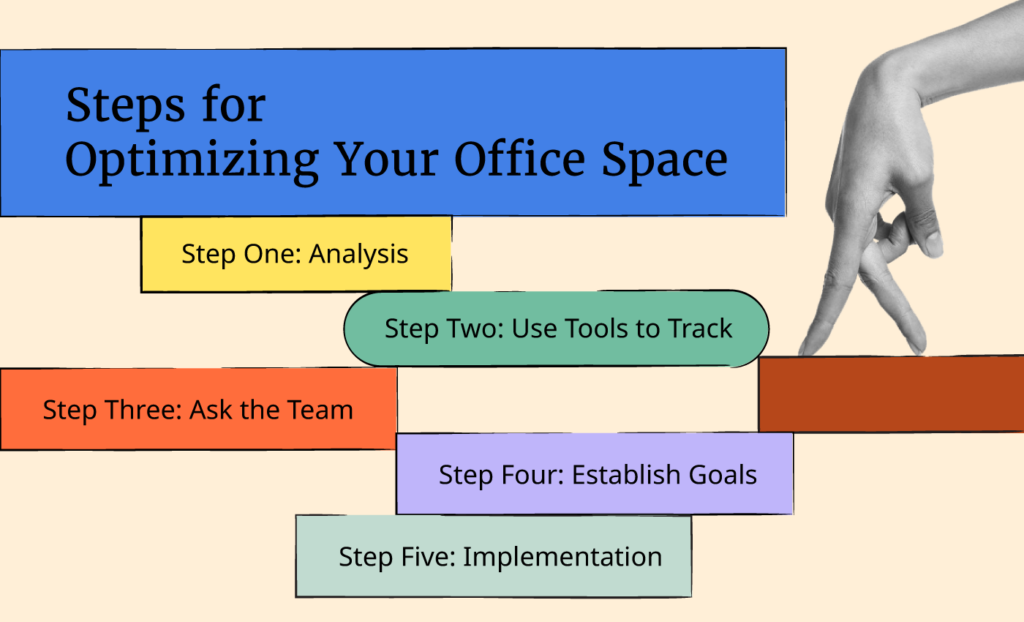Office management solutions go way beyond desk placement—it's about creating an environment where your team thrives and every inch of space is used effectively.
Like in Step Brothers, where bunk beds unlocked room for "so many activities," smart space management can transform limited areas into productive, versatile spaces.

The latest trends in HR technology have led to a suite of tools that can help facilitate better office space management, whether it's geared toward accommodating hybrid workers or a full time return to office.
Enterprise HR platforms can now incorporate office space management tools, better optimizing how physical spaces are utilized.
In this article, I’ll share the benefits of office space management and the steps you’ll need to take to optimize your space.
- What is office space management?
- What are the benefits of office space management?
- Steps for optimizing your office space
Let’s dive in.
What is Office Space Management?
Effective office space management has become a critical factor in enhancing employee satisfaction and productivity in today's rapidly evolving work environment.
Office space management involves researching, planning, and optimizing how your organization utilizes space across your real estate portfolio. The process typically uses real-time data regarding space usage, available square footage, occupancy rates, real estate costs, and a variety of other metrics to produce plans and conduct forecasting. With efficient office space management, companies can design environments that foster collaboration, optimize resource allocation, and ultimately drive business success.
Since the pandemic, workspace needs have dramatically changed, catering to in-person and remote team members. Where many teams were entirely in-person pre-covid, many have now transitioned to a hybrid work model in which physical spaces can be treated with a more flexible approach that suits a world where employees don't need to be there every day.
Hybrid workplaces will likely only have a few full-time on-site employees with most popping in occasionally. When they do, services like desk booking and hoteling, conference room booking, visitor management, and check-ins have the potential to drastically improve efficiency.
Companies need to reimagine how they use office space in a hybrid world. Office space should be more about collaboration and less about sitting at desks all day.
By applying strategic workforce management, companies can create smart workspaces that support collaboration and employee well-being. Space management tools monitor real-time and historic space allocation data to surface underutilized spaces and provide suggestions for how to transform them into more valuable floor plans.
Maybe you discover that some of your meeting rooms could be repurposed as a hot desking area, or seating arrangements for remote workers are best relegated to a specific area of the layout.
Maybe two office locations can be combined into one. Office space management means using your available space to better serve your team and business.

Key Benefits of Office Space Management for Your Business
There are several benefits of office space management. Let’s take a look at three of the most impactful:
Improves Employee Satisfaction
Adjusting your space management strategy can improve employee satisfaction by making it easier for team members to conduct their tasks within your work environment. Think about it:
- If an employee has to fight for a desk every time they visit an office, they’ll endure unnecessary stress and anxiety that could otherwise be soothed by using a mobile app to book the space in advance.
- If on-site, staff must choose a new desk every day based on transient employees who come and go, they won’t feel as valued in their roles.
Office space planning is an employee-centric activity with the potential to show your employees that their needs matter. Intentional space design plays a pivotal role in reinforcing corporate culture and boosting team cohesion.
Thoughtfully designed spaces that reflect a company's values can foster a sense of belonging and pride among employees. For instance, incorporating open layouts can promote transparency and collaboration, while designated areas for relaxation can show a commitment to employee well-being.
Realize Cost Efficiencies
For the same reasons that office space management improves carbon footprint, it can also save money. Holding underutilized spaces in a real estate portfolio is costly, especially when the organization is paying to heat and light them daily.
By gaining an understanding of current and historical space utilization, companies can decide to condense spaces into more efficient configurations, surrendering leases or even selling off pieces of their portfolio to free up working capital.
To further optimize cost-efficiency, HR software can provide invaluable insights.
Decreases Carbon Footprint
Environmentally conscious businesses keep an eye on electricity, heat, and water utilization to ensure that valuable natural resources aren’t going to waste. Optimizing your space can decrease the strain on the grid by narrowing the number of locations that are eating up resources.
Similarly, when employees are given the option of remote work, organizations can cut their carbon footprint by cutting back on commute times. When a company uses property management to shift seating allocations and create more sustainable options, the planet benefits too.
Integrating sustainable materials and energy-efficient systems demonstrates a company's dedication to environmental responsibility, further strengthening corporate identity and morale.
Step-by-Step Guide to Optimizing Your Office Space

Now that we understand the benefits of space management, let’s take a look at how to implement office space planning in 5 steps:
Step One: Analysis
The space planning process begins with understanding your existing data. Take inventory of current metrics like:
- Existing office technology used in the space
- Total square footage
- Total workplace capacity
- Capacity of each individual space
- Function of each area of the office.
Step Two: Use Tools to Track
Effective tracking is best done with the right tools. Integrating workplace management systems can assist you with both planning and carrying out your space management strategy. You can also manage functions like desk and meeting room booking with a hot desk booking software.
Step Three: Ask the Team
Employee feedback is crucial to developing a space management strategy that works for everyone involved. Consider sending out a survey to employees. Ask questions like:
- How would you rate your workspace?
- Do you feel supported in completing your tasks at work?
- How can we improve the in-office experience?
- What’s your biggest challenge when visiting the office?
Step Four: Establish Goals
From the feedback you receive from staff, you’ll be able to narrow down the central objectives for your optimization plan. How can these goals be achieved using the space that you currently have?
In re-allocating resources, office space management software can be an invaluable tool to assist you in dreaming up new solutions and building out floor plans to support them.
Step Five: Implementation
To effectively implement your office space management plan is an ongoing process. Past the initial launch, you’ll need to continuously monitor utilization and regularly gather feedback from your team. This way you can quickly identify problems and create adaptive solutions.
For example, curating a flexible office environment can effectively support diverse work needs and activities. Incorporating modular furniture and movable partitions allows teams to easily reconfigure spaces, enabling seamless transitions between collaborative meetings and focused individual tasks.
Repurposing underutilized areas into multifunctional zones maximizes office efficiency, offering employees adaptable spaces that cater to various work styles. For instance, an unused corner can be transformed into a quiet workspace or an informal meeting area without requiring major renovations. This level of flexibility enhances space utilization and ensures the office remains agile, evolving with changing business and employee needs.
Need expert help selecting the right Other Software?
If you’re struggling to choose the right software, let us help you. Just share your needs in the form below and you’ll get free access to our dedicated software advisors who match and connect you with the best vendors for your needs.
How can office space management software help?
Office space management software can handle many of the tedious administrative tasks associated with office space management.
These tools allow employees to place self-serve bookings for desks, meeting rooms, and parking spaces, and also assist you in creating interactive floor plans to forecast and reimagine your space utilization.
And, for more information on the modern workplace, don’t forget to subscribe to our newsletter. You’ll be the first to know about brand new articles and podcast episodes as soon as they drop.



